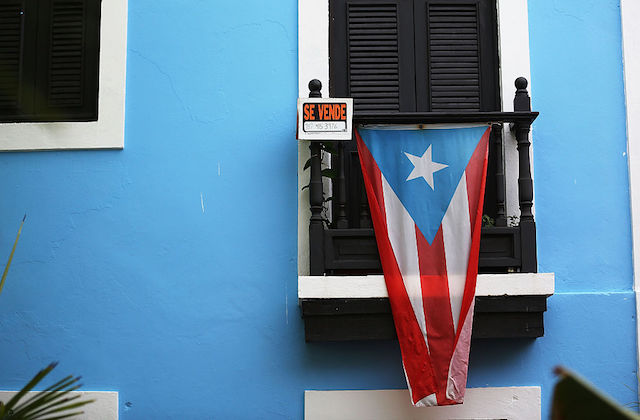Last night (January 24), government leaders in Puerto Rico acknowledged another victim of the hurricane that devastated the island in September: the debt restructuring plan meant to pay back $3.6 billion to creditors in the next five years.
Governor Ricardo A. Rosselló announced at a press briefing that in the aftermath of the storm, the island will be unable to pay down any of its more than $70 billion of defaulted debt over the next five years. But that’s exactly what the commonwealth is obligated to do under a debt moratorium plan approved by a fiscal oversight board before Hurricane Maria hit.
Per The New York Times:
Just before the hurricane, Puerto Rico had made plans to pay creditors a total of $3.6 billion through 2022. That was just a fraction of the amount due, had the island, a United States commonwealth, not gone into default.
Now, Puerto Rico expects its budget to be $2 billion to $3 billion in the red, Gov. Ricardo A. Rosselló told reporters at a briefing on Wednesday—a deficit that will take five years to shrink. By then, he said, the cumulative effect of tough economic austerity measures will help the island’s government achieve a balanced budget, as required by the federal oversight board that controls Puerto Rico’s troubled finances.
In order to help the island financially recover under the weight of its total $72 billion of bond debt, the United States Senate passed a bill in June 2016 called PROMESA (the Puerto Rico Oversight, Management and Economic Stability Act). Under PROMESA, a seven-member control board will oversee creditor and court negotiations with the goal of reducing the debt. In addition, Puerto Rico’s government leaders must create a plan that will keep the territory from incurring more debt. After the passage of PROMESA, the island declared a form of bankruptcy in May 2017.
The oversight board, according to The Times, “has been at odds with Puerto Rican leaders over how to restore fiscal balance after years of spending more than they had, and borrowing to make up the difference.” One current board proposal is that public employee pensions be reduced by 10 percent. But the governor disagrees with targeting what he calls a “vulnerable” population.
In addition, the federal government has accused the island of having more money at its disposal than Puerto Rican officials claim. Says The Times:
On January 9, the Treasury and the Federal Emergency Management Agency notified Puerto Rico it could not begin drawing on its share of a $4.9 billion disaster-relief loan approved by Congress because the commonwealth still has about $1.7 billion in cash available to spend on its own—as well as another $6.9 billion in cash “on deposit in over 800 accounts across all Commonwealth governmental entities."
Last Friday, the oversight board asked Puerto Rican officials about the $6.9 billion, which was discovered in December. About $4.3 billion was said to be tied up in funding for other government agencies, even as the power, water and sewer utilities struggle to make ends meet.
Compounding the economic problems for the island is the continuing exodus of residents who are leaving Puerto Rico following the storm, citing rising unemployment and untenable living conditions as their motivation. The Times reports that, since the September storm, tens of thousands have left for mainland United States. By the end of 2018, it’s estimated that approximately 7.7 percent of the population, or nearly 262,000 people, will have relocated. As Colorlines previously reported, Puerto Rico’s unemployment rate was 45 percent in January 2017. And, according to the Pew Research Center, the island’s population had already decreased by 7 percent between 2010 and 2015 as the economic crisis and recession worsened.
As unemployment concerns grow for many of the island’s residents, another ongoing problem is electricity. An ABC News report released yesterday explored how four months after Maria, 450,000 people are still without power, according to the the Army Corps of Engineers.
